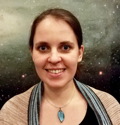Program
The schedule of the school is given on the Schedule page.
Prerequisites
In order to attend the school, some minimal knowledge are required in Cosmology, in Statistics and Probability.
Lectures
EFFECTIVE FIELD THEORY IN COSMOLOGY

Daniel Baumann, Amsterdam University, The Netherlands.
It is a basic fact of life that Nature comes to us in many scales. Galaxies, planets, molecules, atoms and nuclei have very different sizes, and are held together by very different binding energies. However, it is another important fact of life that phenomena involving distinct scales can often be analysed by considering one relevant scale at a time.
Taking advantage of these scale separations leads to so-called effective field theories. In these lectures, I will first introduce the basic concepts of effective field theories and then apply them to various examples in cosmology.
- Lecture 1 – Introduction to Effective Field Theory.
- Lecture 2 – EFT of Inflation.
- Lecture 3 – EFT of Large-Scale Structure.
Literature
- "Inflation and String Theory", Daniel Baumann, Liam McAllister, - arxiv:1404.2601
- "Effective Theory of Cosmological Perturbations", Federico Piazza, Filippo Vernizzi, - arxiv:1307.4350
- "Lectures on Inflation", Leonardo Senatore - arxiv:1609.00716
- "The Effective Field Theorist’s Approach to Gravitational Dynamics", Rafael A. Porto, - arXiv:1601.04914v2
Prerequisites
The course will mostly be self-contained, but some knowledge of basic cosmology and quantum field theory will be helpful.
RANDOM MATRICES

Sebastien Renaux-Petel, Institut d'Astrophysique de Paris, France.
Since the introduction of random matrices by Wishart in the study of the statistics of population characteristics, and its later use by Wigner to model heavy nuclei, random matrix theory has found applications in many field of physics, like quantum chaos, disordered systems, quantum entanglement, neural networks, gauge theory, statistical physics, cosmology, just to cite a few. I will first introduce the basic concepts of this field, that enable one to predict the distribution of eigenvalues of random matrices, and then apply them to selected problems of interest in cosmology.
- Lecture 1 – Introduction to Random Matrix Theory.
- Lecture 2 – Applications to cosmology.
Useful books
-
"The Oxford Handbook of Random Matrix Theory", Ed. Gernot Akemann, Jinho Baik, and Philippe Di Francesco.
Prerequisites
The course will be self-contained, but a basic knowledge of linear algebra and probability at undergraduate level will be useful.
BAYESIAN INFERENCE: PRINCIPLES AND TECHNIQUES

Roberto Trotta , Imperial College, London, United Kingdom.
I will present an overview of Bayesian statistics, the underlying concepts and application methodology that will be useful to astronomers/cosmologists seeking to analyse and interpret a wide variety of data about the Universe. The level will start from elementary notions, without assuming any previous knowledge of statistical methods, and then progresses to more advanced, research-level topics. After an introduction to the importance of statistical inference for the physical sciences, elementary notions of probability theory and inference are introduced and explained. Bayesian methods are then presented, starting from the meaning of Bayes Theorem and its use as inferential engine, including a discussion on priors and posterior distributions. Numerical methods for generating samples from arbitrary posteriors (including Markov Chain Monte Carlo and Nested Sampling) are then covered. If time allows, I will discuss the topic of Bayesian model selection.
- Chapter 1 – Principles of inference: Bayesian vs Frequentist.
- Chapter 2 – Basics: Priors, Likelihood, Posterior, Evidence.
- Chapter 3 – Bayesian Model Building.
- Chapter 4 – Numerical technique for Bayesian inference: MCMC and Nested Sampling.
- Chapter 5 – Principles of Model Comparison, Interpretation and Numerical Tools.
Literature
- "Bayesian Method in Cosmology", Lecture notes for the 44th Saas Fee Advanced Course on Astronomy and Astrophysics, “Cosmology with wide-field surveys” (March 2014), to be published by Springer. arXiv:1701.01467v1 .
- Bayesian hierarchical methods:"Some Aspects of Measurement Error in Linear Regression of Astronomical Data", B. C. Kelly, Astrophys. J. 665, 1489 (2007) doi:10.1086/519947 - arXiv:0705.2774.
- Bayesian model selection: "Applications of Bayesian model selection to cosmological parameters", R. Trotta (2007), Mon. Not. R. Astron. Soc., 378, 72-82 (2007), rXiv:astro-ph/0504022.
Useful books
- E.T. Jaynes, Probability Theory: The Logic of Science: Principles and Elementary Applications Vol 1, CUP (2003)
- D. MacKay, Information Theory, Inference and Learning Algorithms, CUP (2003), freely available from: inference
Prerequisites
A familiarity with basic data analysis (likelihood, chi-square fits, hypothesis testing) at undergraduate level will be useful.
COMPUTATIONAL METHODS IN COSMOLOGY

Klaus Dolag, Max Planck Institut für Astrophysik, and Alexander Arth, Universitäts-Sternwarte, München, Germany.
Although the formation of the structures in the universe is mainly driven by large scale gravitational instabilities, our understanding of the evolution of galaxies and galaxy clusters is tightly coupled to the complex galaxy formation physics, which is highly non-linear and where various aspects still are poorly understood. Therefore advanced computer simulations with large dynamical range have to be performed, following simultaneously various physical processes across different scales. This series of lectures will give insight into modern numerical simulation techniques. The hands on tutorials will provide a first hand experience in the simple numerical challenges inherited in simulation n-body systems.
- Lecture 1 – Methods for Cosmological Simulations (N-Body/Hydro/Initial-conditions).
- Lecture 2 – Numerical Treatment of Physical Processes (Star-Formation and Black-Holes, Magnetic-Fields, Transport-Processes).
- Hands on 1 – Numerical Integration (Euler and Leapfrog).
- Hands on 2 – Treating N-Bodies (Central potential and self-gravity).
Literature
- "Simulation Techniques for Cosmological Simulations", Space Science Review, Dolag et al. 2009a.
- "Non-Thermal Processes in Cosmological Simulations", Space Science Review, Dolag et al. 2009b.
- See also Volume 2 of The Encyclopedia of Cosmology., especially Chapter 3 and Chapter 9.
- The hands on tutorials are based on the Gravitational Dynamics lecture at LMU.
Hands On preparation
Before the school, please prepare the following exercises. Thereby you should learn how to use commands in a unix shell, how to compile and execute a program, how to define variables, functions and structures/classes in C++ and especially prepare a vector class with useful members functions and operator definitions. You should also know how to write out a data file from your code and how to plot the results with gnuplot.
ADVANCED TOPICS IN (BAYESIAN) DATA ANALYSIS

Daniela Huppenkotehn, DIRAC Institute, University of Washington, USA
As our data sets grow and become ever more complex, advanced data analysis methods are becoming increasingly important to make principled statistical inferences and learn something about the physical processes in our universe. In these lectures I will build on the knowledge of Bayesian statistics gained on some of the other lectures and introduce some advanced techniques rooted in these principles. We will discuss Bayesian hierarchical models in depth and work through some case studies in astronomy and cosmology where Bayesian (hierarchical) models have been crucial to our understanding of the physics. Finally, I will discuss the increasingly important case where our data sets are too large for run-of-the-mill Bayesian posterior estimation or model comparison to be feasible, and discuss how (statistical) machine learning can help us in these situations.
- Lecture 1 – Bayesian Hierarchical Inference and Probabilistic Graphical Models.
- Lecture 2 – Bayesian Statistics: Case Studies from Astronomy and Cosmology.
- Lecture 3 – Statistical Machine Learning.
Literature
- "Statistics, Data Mining and Machine Learning in Astronomy", Ivezic, Connolly, VanderPlas, Gray: Princeton Series in Modern Observational Astronomy, 1st Edition.
- "Build, Compute, Critique, Repeat: Data Analysis with Latent Variable Models”; http://www.cs.columbia.edu/~blei/papers/Blei2014b.pdf.
- "Pattern Recognition and Machine Learning" Bishop.
- "Bayesian Data Analysis”, Gelman et al. (2nd or 3rd Edition).
Prerequisites
The course will be largely self-contained, but some familiarity with Bayesian statistics will be helpful.
A SHORT HISTORY OF THE COSMOLOGICAL THINKING

Ugo Moschella, DISAT, Università dell'Insubria, Italy
About the fascinating history of cosmological thinking and the guiding role of gravity, starting from ancient Greece, through the birth of science with Galileo and Newton, to its becoming part of science in 1917 with Einstein’s famous paper “Cosmological Considerations in the General Theory of Relativity” up to Lemaitre’s understanding of the expansion of the universe.
Literature
- "La sagesse du monde: Histoire de l'expérience humaine de l'univers”; Rémi Brague, Ed. Fayard 1999
- "From the Closed World to the Infinite Universe" A. Koyre, 1957
- "Brève histoire de la pensée cosmologique”, Ugo Moschella, in P. Vanhove et al., Ed. Dunod (In press).
- "La nascita della scienza moderna in Europa”, Paolo Rossi, Ed. Laterza, 2000.
Posters
Participants are invited to submit a poster, see registration page. The posters will be displayed during all the week.